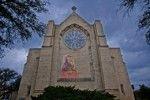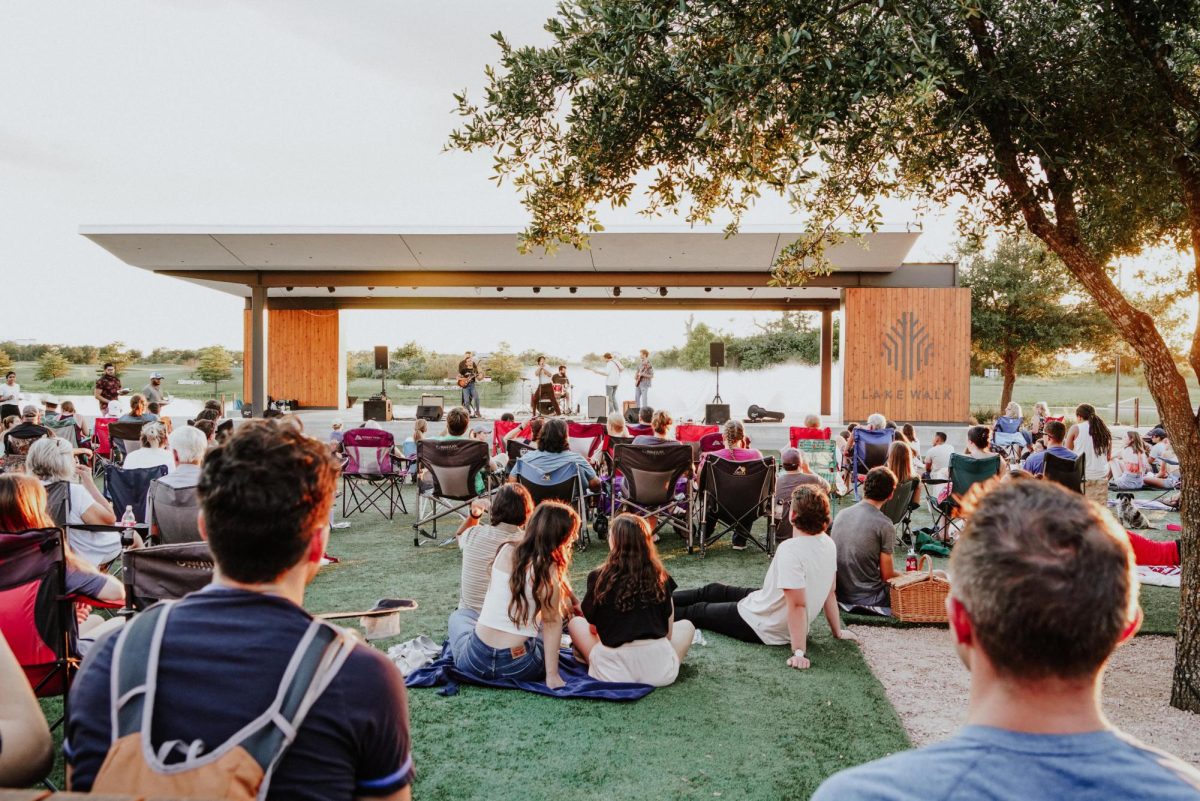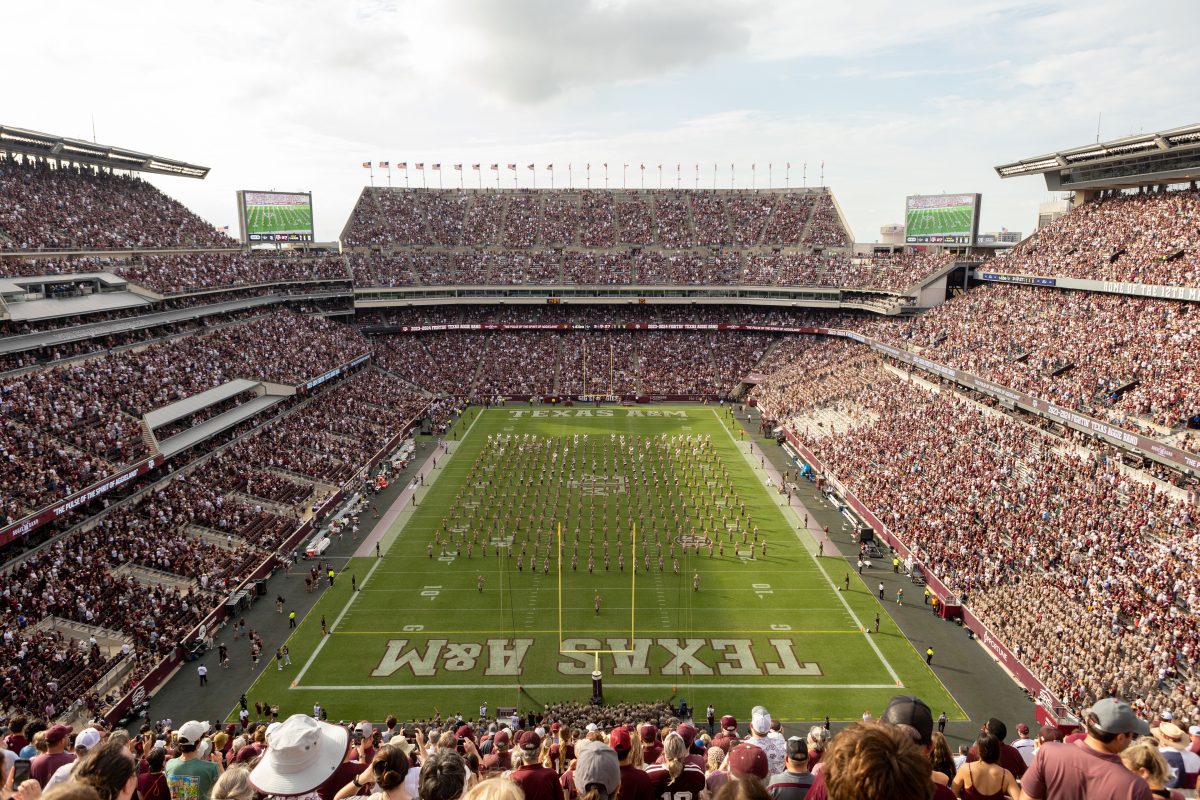In the rush between biology and philosophy, students hurriedly shove loose change into a vending machine, hitting various combinations of letters and numbers to select the beverage that will fuel them through the next class. Rarely do they stop to run their fingertips over the embossed “In God we trust” found on each coin.
American society is regularly exposed to the words God, religion or spirituality. This terminology may be recognized through a shared cultural experience, but over time the interpretations of these words can differ greatly between individuals and regions. The “millennial generation” (born between 1981 and 1992) increasingly interacts with religion outside of traditional institutionalized boundaries on a national scale. Although this trend does not seem to be fully adopted on the Texas A&M campus.
In a 2012 survey conducted by the Pew Research Center, 32 percent of respondents aged 18-29 described themselves as religiously “unaffiliated.” This number of young adults that does not claim association with a particular religion is not only higher than older generations, but it is also significantly larger than those reported by previous generations of the same ages.
Richard Stadelmann, associate professor of philosophy at A&M, said it has been a common phenomenon for people in their late teens and early 20s to leave organized religions. In the past, these individuals would eventually return to the church, but Stadelmann said this was not being observed in today’s young adults.
“Quite obviously younger people have not returned to church – and I say returned the way they did in the 50s and 40s,” Stadelmann said. “Young people have always around college age frequently dropped out for a few years, but they’ve then had children and families and by and large returned, and this generation has not returned to the mainline denominations.”
According to the same Pew Research survey, less than 6 percent of those who described themselves as “religiously unaffiliated” also describe themselves as atheists or agnostics. Stadelmann said it was not necessarily that a decrease in religious interest was taking place, but a change in how people interpret religion, especially with developments in technology that have made information more easily accessible.
“It’s not true that the atheists are gaining,” Stadelmann said. “Young people that drop out of the church often consider themselves very spiritual. They engage in what I have long called designer religion, taking a little bit of this, a little bit of that – internet shopping.”
Matt Morton, college pastor for Grace Bible Church, said today’s young adults are interacting with institutions and ideas such as religions in a more individualistic manner.
“I do think, on the whole, this generation wants to consider each religion’s claims on their own terms,” Morton said. “Previous generations tended to look at religion in the context of the community that they were in. So, they would generally follow the religion of their parents or those in authority in their community.”
Joseph Francis, junior history major and religious studies minor, said people may feel uncomfortable identifying with an organized religion because of the implications associated with aligning oneself inside a flawed institution.
“Institutional structures are imperfect, so when something goes wrong within an institutionalized religion popular culture and the media say, ‘Look, these people, the Catholics or the Jews or the Muslims,'” Francis said. “It gives them a negative connotation, and so a lot of people tend to be wary of associating themselves with one of those churches or one of those religions because then they’re grouped in with them and they have some sort of responsibility.”
To relieve some of the anxiety of maintaining religious beliefs that can be associated with imperfect institutions, Chad Seales, an assistant professor of religious studies at the University of Texas, said people may adopt the more fluid term of “spiritual” rather than “religious.”
“Spirituality becomes a label for people who don’t want to be associated with certain religious institutions,” Seales said. “It’s another way of maintaining a self-understanding as religious but doing it in a way that’s different from their parents or grandparents.”
Seales also said identifying as spiritual is also part of the need to be viewed as an individual while holding on to traditions and cultural influences. He said the battle to be a self-sufficient individual while still maintaining an identity as a product of society is a struggle that permeates much of American life, including attitudes toward religion.
Within this national change in attitude toward religion, A&M is still considered a very religious campus. The Princeton Review ranks A&M students as the 13th most religious in the nation. It is the highest-ranking public university on the list.
Yet Seales said rankings such as this say more about the accepted definition of “religious” than about the actual atmosphere of the university. In modern culture, he said, conservative evangelicalism is often synonymous with the term “religious,” and the strong conservative evangelical movement found at A&M could fit the “religious” stereotype more so than areas exhibiting progressive evangelical ideologies.
“Most Americans view religions in terms of its belief and doctrinal adherence,” Seales said. “That really shapes what we understand, in a public sense, of religion or being religious. So if you did a comparison between University of Texas in Austin and Texas A&M in College Station, there might not be any difference or very little difference in terms of actual practice, in terms of how often students go to religious services, or if you interviewed them in an extended sense, if they would consider themselves religious or spiritual.”
Stadelmann said even when the term “religious” was taken outside the context of conservative evangelicalism, the A&M campus was still more religious than any other public university in his experience.
“I think A&M is more religious than most schools, both in terms of actually participating with church organizations – with the institution of religion – it’s certainly more religious in terms of people with spiritual interests,” Stadelmann said. “So I think in both of those areas, it’s more religious than most state schools. I’ve been here 45 years. There’s probably less participation with local churches than there was before, but there’s almost no drop off in lack of religious interests.”
This belief that A&M exhibited noticeably different attitudes toward religion was solidified, Stadelmann said, when he recreated an experiment of theologian Gabriel Vahanian, who was part of the “Death of God” movement and posited that the term “God” no longer made a significant impact in modern culture.
The late Vahanian said “damn it” aloud to his class one day and his students looked up. He said “God damn it” on another day and students behaved the same way.
Stadelmann tried the experiment in one of his classes at A&M.
“I said ‘damn’ one day, a few students looked up. I said ‘God damn’ one day – I had a group praying for me, I had students come up to me at the end of the class session and I called Vahanian and I said this is what happened at A&M and he said, ‘Well, God is dead at Syracuse, but he’s alive at Texas A&M.'”
Multiple theories have been proposed to explain why A&M is considered a more religious, especially a more “Christian” campus. Seales said the influence of an evangelical history could play a significant role. The conservative, religious atmosphere on a campus with a strong military presence could also attract students of similar mindsets and values, both Stadelmann and Morton said, creating a self-perpetuating reputation.
Morton also said students on the Texas A&M campus seemed to possess unique entrepreneurial and leadership abilities. A&M sets the pace for many other schools, he said, as he has watched organizations and programs born at A&M develop counterparts at other universities. Morton, who is Class of 1998, said he even believes the school has developed more of a Christian presence since he was a student.
From the perspective of a college student, this can be a time to evaluate familiar traditions and culture and to search for answers inside and outside these comfortable boundaries.
Terrell Feathers, sophomore theatre arts major, said even if he is studying in a conservative and religious environment, the act of leaving home and becoming exposed to global ideas and philosophies has allowed him to understand the world is much larger than his own experiences.
“A lot of us are finally on our own, and so we see that the world did not start when we were born,” Feathers said. “We see that the world is much bigger than what we were taught and what we’ve seen growing up, and so people are searching for answers.”
Trending Theology
April 25, 2013

Donate to The Battalion
Your donation will support the student journalists of Texas A&M University - College Station. Your contribution will allow us to purchase equipment and cover our annual website hosting costs.




















